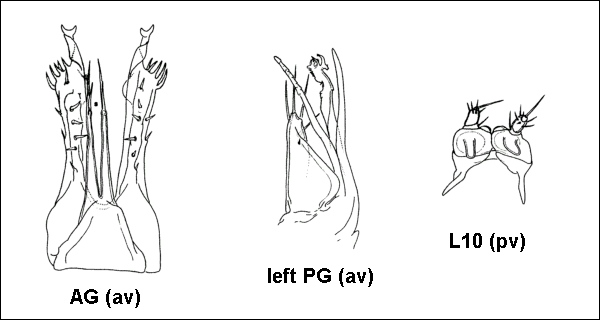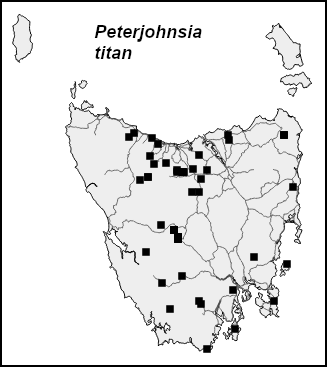Chordeumatida species
The gonopod drawings on this page are by W.A. Shear and are used here with his permission. Abbreviations in drawings: AG = anterior gonopods, PG = posterior gonopods, L10 = legpair 10, av = anterior view, pv = posterior view.
Australeuma jeekeli Golovatch, 1986

This mainly eastern species rarely grows longer than 10 mm but is sometimes locally abundant. It is readily pitfall-trapped, and pitfall data from native forest show a strong peak in surface activity for A. jeekeli in early summer. All-gray forms (no contrasting colour on paranota) seem to be most common at the extremities of the A. jeekeli range, but the colour forms have not yet been carefully mapped. Australeuma jeekeli occurs in a wide range of forest habitats. It survives clearfelling and burning of wet forest and is found in Pinus radiata plantations.
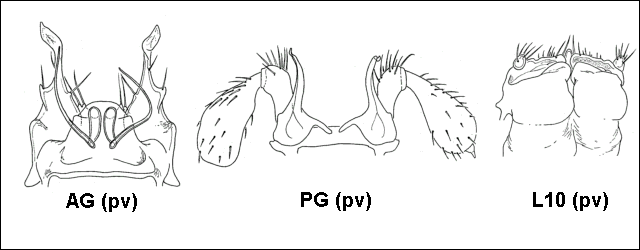
Australeuma simile Golovatch, 1986
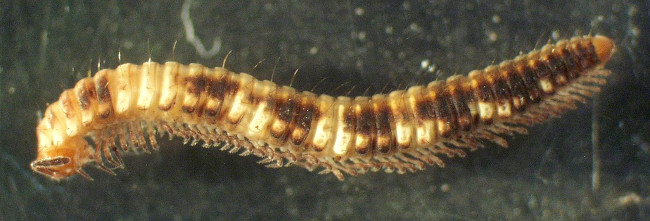
Over much of the A. simile range in western Tasmania, the dark brown colouring shown in the image above is only present on the tips of the paranota and at the bases of the long dorsal setae, and to the naked eye the animal is uniformly pale yellow. This species grows to ca 12 mm long and is locally abundant in wet forest, and also thrives in buttongrass moorland in the Southwest. I have found large populations in eucalypt plantations in northwest Tasmania.
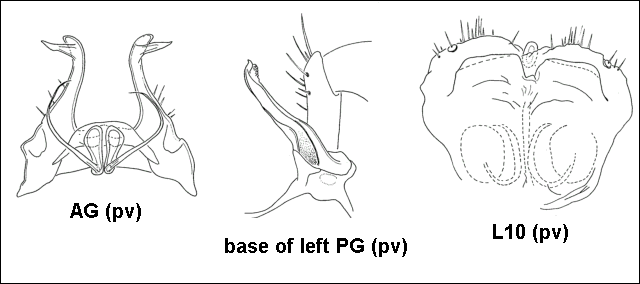
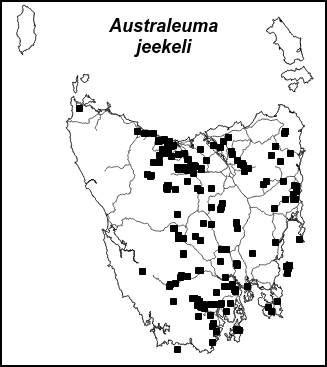
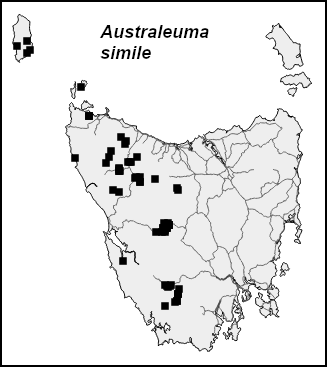
the Australeuma mauriesi group
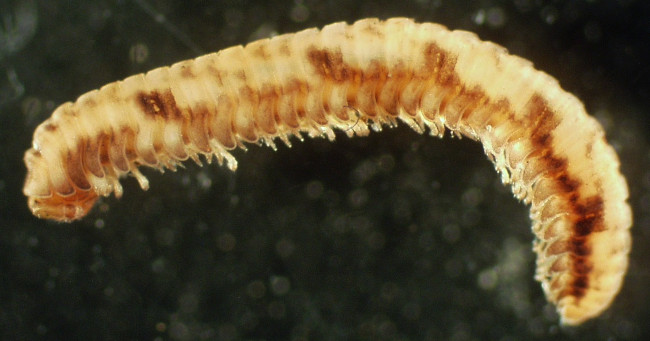
There are at least two species in this group. All forms have a striking colour pattern and paranota deflected downwards at roughly 45° from the horizontal. Species can only be positively identified by dissection and close examination of the male gonopods. Australeuma in this group seem to be most abundant in wet forest at intermediate elevations (ca 600-1000 m).
Australeuma golovatchi Shear and Mesibov, 1997
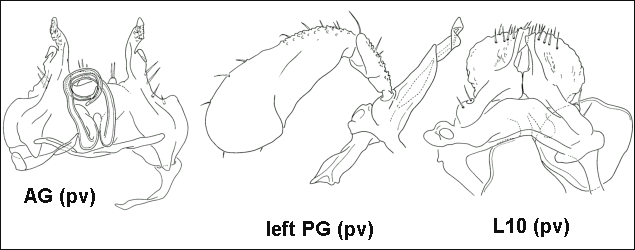
Australeuma mauriesi Shear and Mesibov, 1997
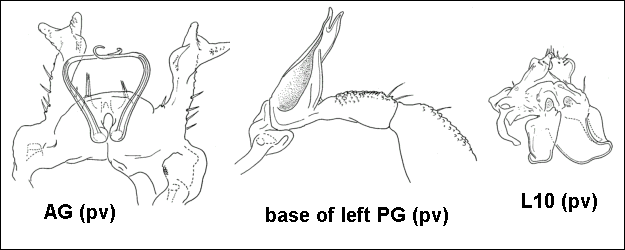
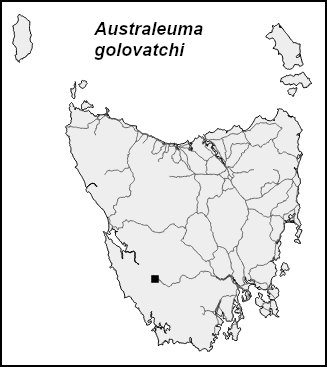
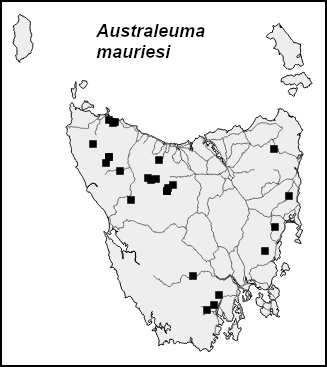
Nesiothrix species
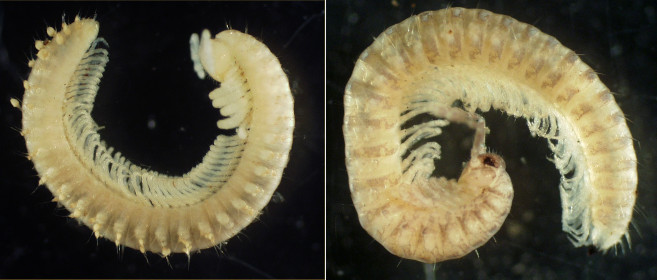
Nesiothrix medialis (left) and N. tasmanica (right)
These inconspicuous, pale chordeumatidans grow to ca 8 mm long and are mainly found in wet forest at lower elevations. Nesiothrix medialis is abundant in the Southern Forests, including eucalypt regrowth arising from clearfall-and-burn silviculture. Nesiothrix tasmanica is the most widespread Nesiothrix species, and southeastern specimens are often banded (image above right). Nesiothrix mangana is so far known only from Mt Mangana on Bruny Island but is likely to have been overlooked elsewhere. A fourth, undescribed Nesiothrix is restricted to the Northwest and is abundant in Pinus radiata plantations.
Nesiothrix mangana Shear and Mesibov, 1997
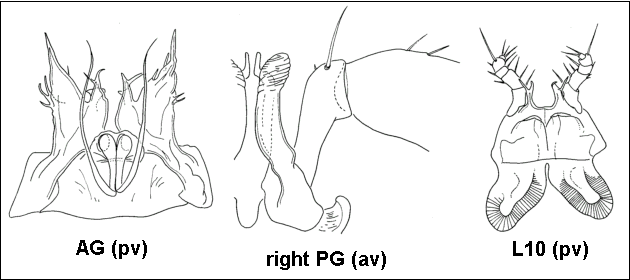
Nesiothrix medialis Shear and Mesibov, 1997
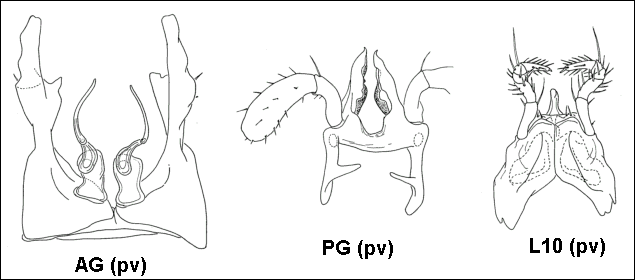
Nesiothrix tasmanica (Golovatch, 1986)
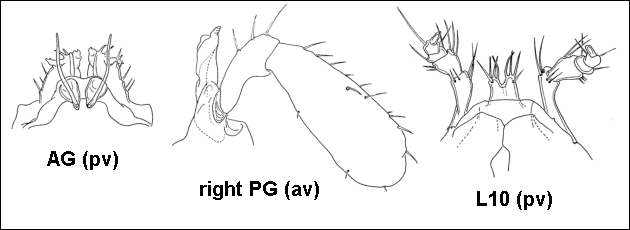
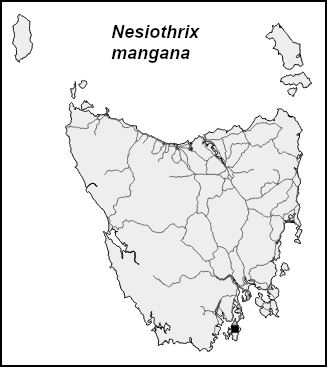
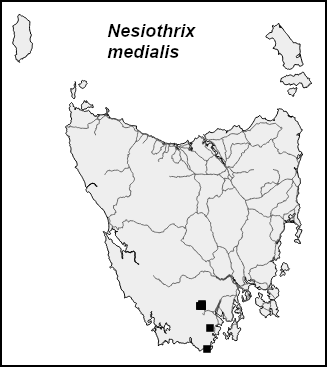
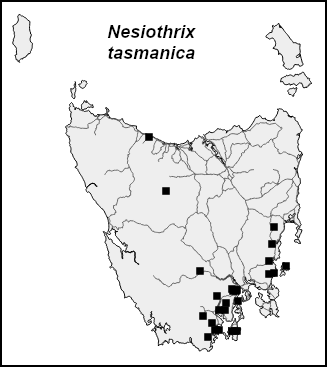
Reginaterreuma tarkinensis Shear and Mesibov, 1995

This species is Tasmania's largest chordeumatidan and can grow to nearly 20 mm in length. It is a conspicuous, fast-running millipede and can be very abundant in lowland Nothofagus forest in the Northwest. In the eastern portion of its range R. tarkinensis has been found in Pinus radiata plantations.
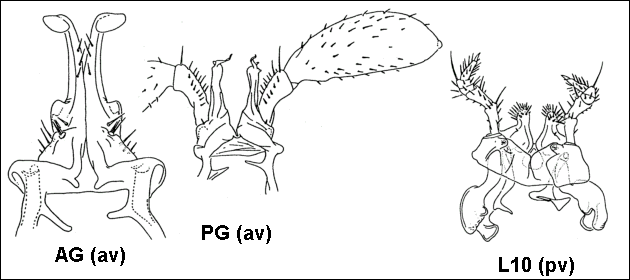
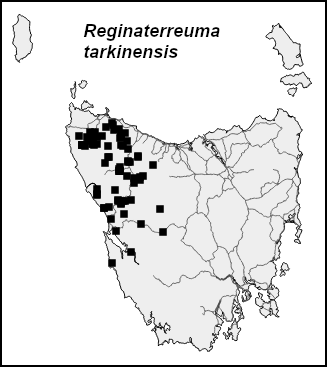
Neocambrisoma species
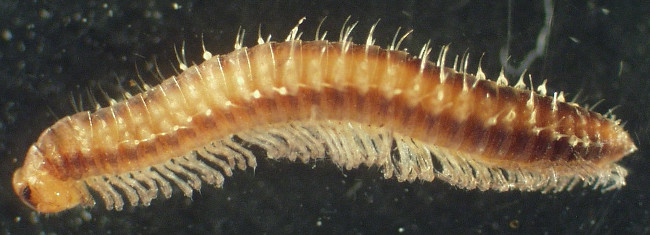
The two known species of Tasmanian Neocambrisoma can be very hard to distinguish from Peterjohnsia titan and from each other, and positive identifications can only be made by dissecting out and examining the gonopods of mature males. In both genera adults reach 7-8 mm in length.
Neocambrisoma in Tasmania is a wet-forest genus. Neocambrisoma cachinnus only seems to be common at higher elevations (600+ m), and N. fieldensis has so far only been found in Mt Field National Park. A third, undescribed Neocambrisoma (?) occurs in the Southeast.
Neocambrisoma cachinnus Shear and Mesibov, 1997
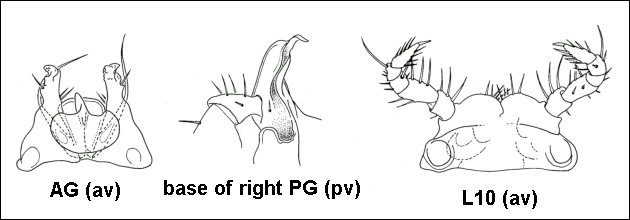
Neocambrisoma fieldensis Shear and Mesibov, 1997
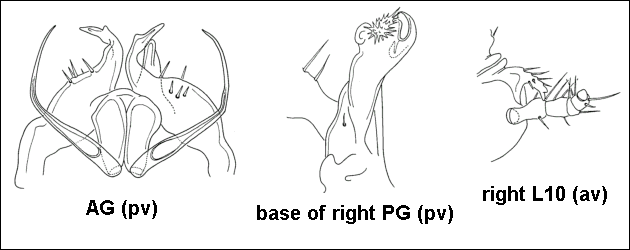
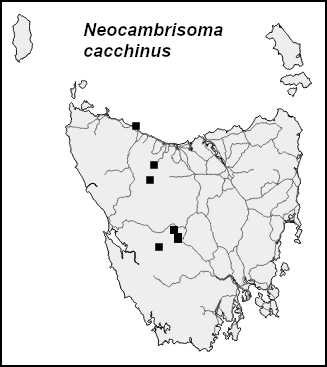
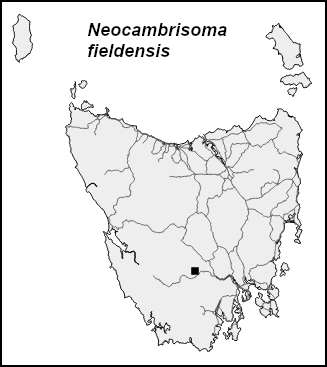
Peterjohnsia titan Shear and Mesibov, 1994
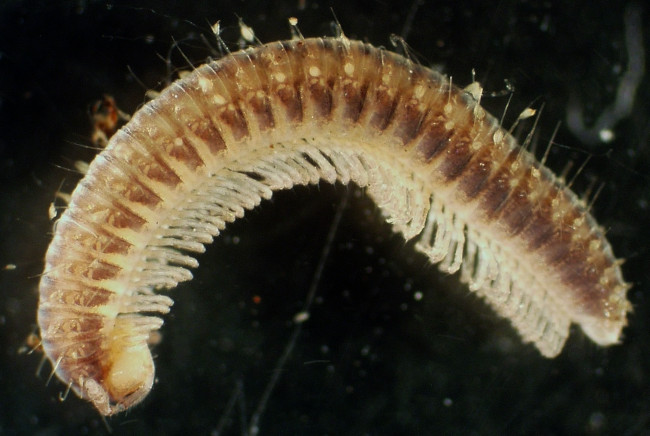
This widespread chordeumatidan can be very hard to distinguish from Neocambrisoma species, and positive identification can only be made by dissecting and examining the gonopods of mature males. In both genera adults reach 7-8 mm in length. Peterjohnsia titan occurs in a wide range of forest types and has also been found in Pinus radiata plantations.
